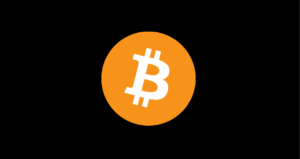Litecoin, often referred to as digital silver, has been gaining popularity in the cryptocurrency world. But why is Litecoin called digital silver, and how does it differ from other cryptocurrencies like Bitcoin? Let’s dive into the fascinating world of Litecoin to understand its unique features and use cases.
Created by Charlie Lee in 2011, Litecoin was designed as a lighter and faster alternative to Bitcoin. Its silver nickname comes from its role as a complementary asset to Bitcoin, often considered digital gold. While Bitcoin is known for its store of value and scarcity, Litecoin shines in terms of speed and lower transaction fees.
One of the key technical differences between Bitcoin and Litecoin is the hashing algorithm they use. Bitcoin uses the SHA-256 algorithm, while Litecoin employs Scrypt. This algorithm switch allows Litecoin to process transactions more quickly, making it a preferred choice for day-to-day transactions.
In addition to its faster block generation time of around 2.5 minutes compared to Bitcoin’s 10 minutes, Litecoin also has a higher maximum supply limit of 84 million coins, four times more than Bitcoin’s 21 million. This higher supply limit provides more flexibility for transactions and ensures that Litecoin remains affordable for users.
Litecoin’s adoption has been steadily growing, with merchants and businesses accepting it as a payment option. The integration of Litecoin in various payment platforms and wallets has made it easier for users to spend their digital silver on everyday purchases.
One of the standout features of Litecoin is the Lightning Network, a second-layer scaling solution that enables instant and low-cost transactions. By leveraging off-chain channels, the Lightning Network enhances the scalability and efficiency of Litecoin transactions, offering a glimpse into the future of digital payments.
Litecoin’s community-driven development and active involvement in advancing the technology have contributed to its success in the cryptocurrency space. From implementing privacy features like Confidential Transactions to exploring interoperability with other blockchains, Litecoin continues to evolve to meet the needs of its users.
Investors and enthusiasts view Litecoin as a valuable asset due to its solid performance and established history in the crypto market. Its reliability, liquidity, and growing adoption make it a favored choice for diversifying crypto portfolios and participating in the digital economy.
In conclusion, Litecoin’s journey to becoming known as digital silver is a testament to its unique characteristics and position in the cryptocurrency ecosystem. As the digital currency landscape continues to evolve, Litecoin stands out as a versatile and efficient option for users seeking fast and low-cost transactions. Whether you are a seasoned crypto investor or a newcomer to the space, exploring the world of Litecoin can offer valuable insights into the future of decentralized finance.

